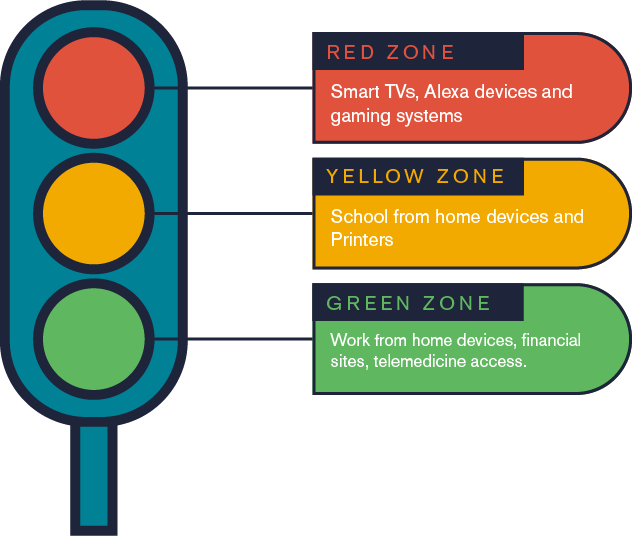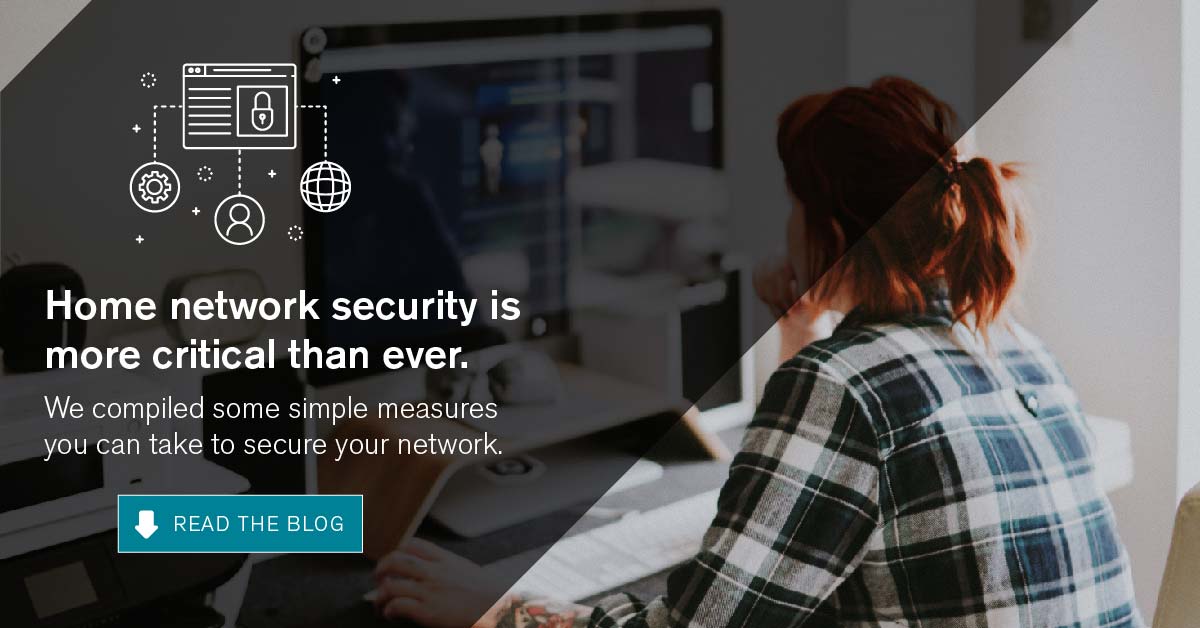With increased screen time very likely due to new remote working or remote schooling needs, your cyber security may be at increased risk too. It is now very important to take proactive security measures to ensure your home network stays safe and protected from people who may want to steal your information. Here are 5 ways to keep your network secure and safe from cyber theives:

Secure your Home Wi-Fi Network
- Ensure that your Wi-Fi network access point is not using the default username and password that came with the unit when it was initially set up. Create a custom username and password for your Wi-fi connection point. This is important because this is the main unit that your other devices are connected to in most instances. It also ensures that only you can make changes to its configuration in the future.
- You should also change the default name of your wireless network. This is typically listed as the SSID in your setup. It is a best practice to keep this name generic enough that it can not be tied back to you (ex. address or your name).
- Only share your Wi-Fi access information with those that you want to access your network.

Secure your Connected Devices
- Create a list of all the devices in your home that are connected to the internet. Remember that this is not just your computer and cell phone. This could be a smart TV, gaming console, Alexa device, printer, camera, security camera, etc.
- Protect each of your devices but setting unique usernames and passwords for each of these devices. Yes – another set of username and passwords to remember but the effort will increase your home security.
- Keep your systems up to date with recent security updates provided by the devices. You can ease this process by taking advantage of the auto update feature provided on some devices.
- Use a reputable and recommended firewall & anti-virus solution to protect your devices.

Create Security Zones
- While this is a more advanced setup and you may need to enlist the help of an IT network professional, creating security zones on your home network will create a better defense against security threats.
- Due to the complexity of different types of equipment, a singular recommendation for completing this network setup is not available. It is recommended that you reach out to your local IT providers for solutioning options.
- The best way to think about this is a stop light. Think of each zone as a stop light “Red, Yellow and Green”. These colored zones would be located behind a network firewall and would be segmented from one another. Each colored zone would contain different type of devices based on the level of security the zone needs.
- Below is a chart that illustrates device connection by zone:


Staying Secure While Working from Home
- When working from home using a company provided device (ex. laptop), don’t allow others in the home to use that device for any non-business activities, including online gaming, social media sites, app downloads, school work, file transfers, etc. The unintended consequence of this is could result in malware and virus entry into your home and work networks.
- Turn off your computer at the end of your workday. This simple daily task can assist in warding off a virtual cyber-attack while the computer is in shut down mode.

General At-Home Security
- Change your password often and don’t use the same password for your accounts. This is hard right? Who can remember all those lower case, upper case and number combinations? However, coming up with a system to do this will make a difference in case you are the victim of a security breach. The usage of a singular username and password can expose your other accounts if a breach occurs. And don’t forget to make that password a good & secure one. If you do have trouble remembering the different usernames and passwords, considering using a password management tool like Dashlane or Lastpass.
- When setting up online accounts, set up the two-step verification process if it is offered. This offers an extra layer of security.
- Be aware and don’t be fooled by phishing emails, text messages and phony apps. Use common sense when reviewing this information. In general, if the offer seems too good to be true, it probably is. Also, when downloading apps, look for how many other people have downloaded, the age of the app and the reviews before downloading.
- Crisis information can also be masked by those looking to attack your network. When sourcing information on COVID-19, only go to websites that are well known and that you trust. Be leery of 3rd party interactive maps as they may have malware embedded that could infect your device or network.
- Charity scams can also ramp up during a crisis. Make sure to confirm the recipient of your donation before you donate.
Stay safe. Stay connected and secure.
This information was compiled and presented by Astrea in partnership with HIGHGROUND CYBER

